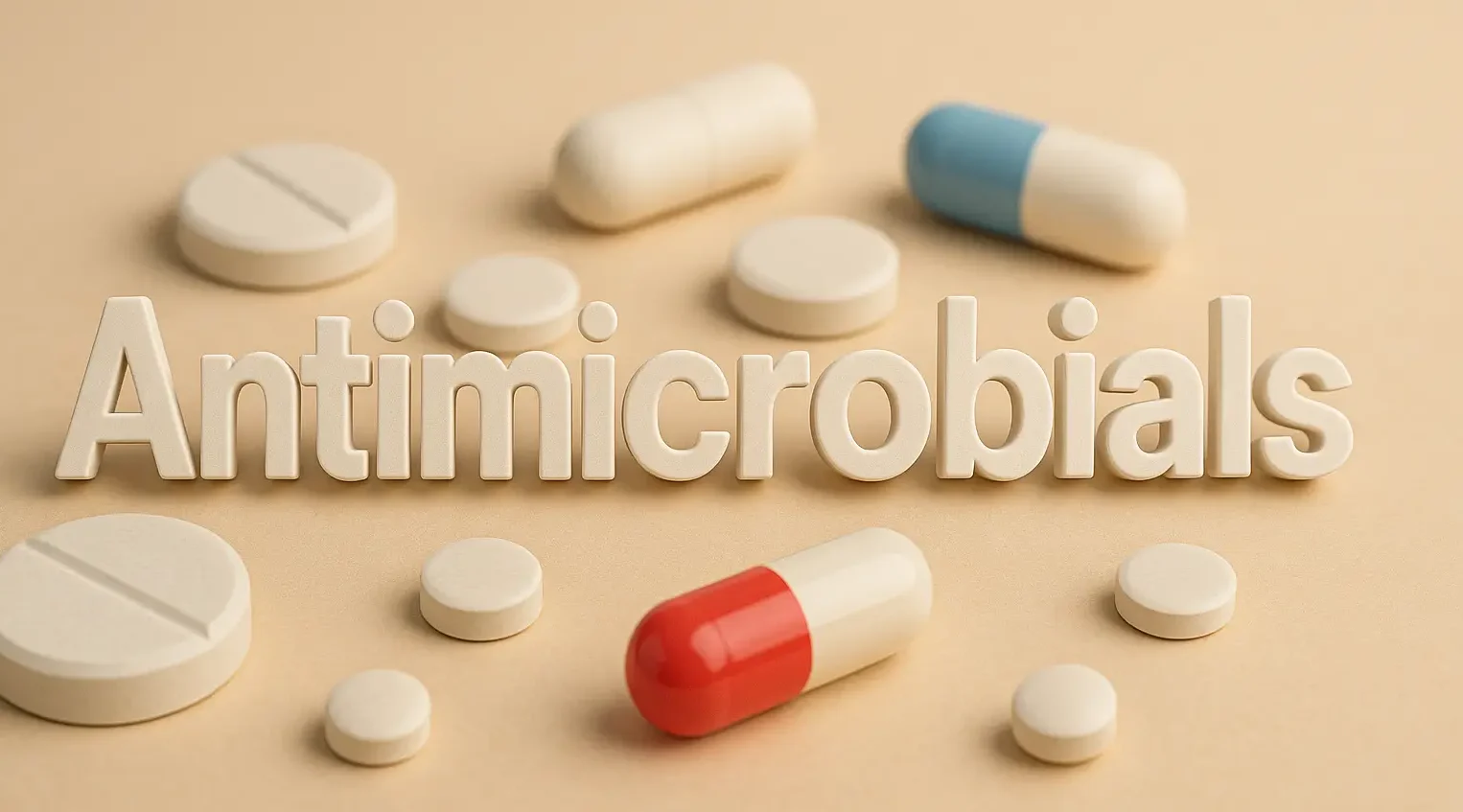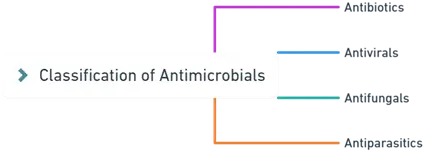Introduction to Antimicrobials:
- Antimicrobials are agents that kill microorganisms or inhibit their growth, playing a critical role in treating and preventing infections in humans, animals, and plants.
- This group includes antibiotics, antivirals, antifungals, and antiparasitics, each with varying mechanisms of action depending on the type of microorganism they target.
Mechanism of Action of Antimicrobials:
- Antimicrobials exert their effects on microorganisms through various mechanisms:
This is a sample ad placement!
-
-
Inhibition of Cell Wall Synthesis:
- Antibiotics like penicillins and cephalosporins target bacterial cell walls, essential for bacterial integrity and survival.
- Inhibiting cell wall synthesis causes bacteria to burst and die.
-
Inhibition of Protein Synthesis:
- Antibiotics such as tetracyclines and macrolides bind to bacterial ribosomes, interfering with protein production necessary for bacterial growth and function.
-
Alteration of Cell Membranes:
- Antifungals like amphotericin B bind to components of fungal cell membranes, increasing permeability and causing leakage of cellular contents.
-
Inhibition of Nucleic Acid Synthesis:
- Drugs like quinolones and rifampicin interfere with DNA or RNA synthesis, crucial for bacterial replication and transcription.
-
Antimetabolites:
- Sulfonamides act as antimetabolites, inhibiting folate synthesis, a vital process for bacterial DNA synthesis and replication.
-
Interference with Pathogen Metabolism:
- Some antimicrobials disrupt specific biochemical pathways essential for the microorganism’s energy production or replication.
-
Classification of Antimicrobials:

- Antimicrobials are classified based on the type of organisms they target, their chemical structure, and their mechanism of action:
This is a sample ad placement!
-
Antibiotics as Antimicrobials:
- Specifically target bacteria.
- Broad-spectrum: Effective against a wide range of bacteria.
- Narrow-spectrum: Effective against specific types of bacteria.
-
Antivirals as Antimicrobials:
- Target viruses.
- Categorized based on the stage of the viral life cycle they affect, such as viral entry inhibitors or nucleoside analogs that inhibit viral replication.
-
Antifungals:
- Used against fungal infections.
- Include classes like polyenes, azoles, and echinocandins, differing in their mechanisms of action.
-
Antiparasitics:
- Target parasitic infections caused by organisms like protozoa and helminths.
- Examples include metronidazole for Giardia infections and mebendazole for worm infections.
Thank you for reading from Firsthope's notes, don't forget to check YouTube videos!
This is a sample ad placement!


